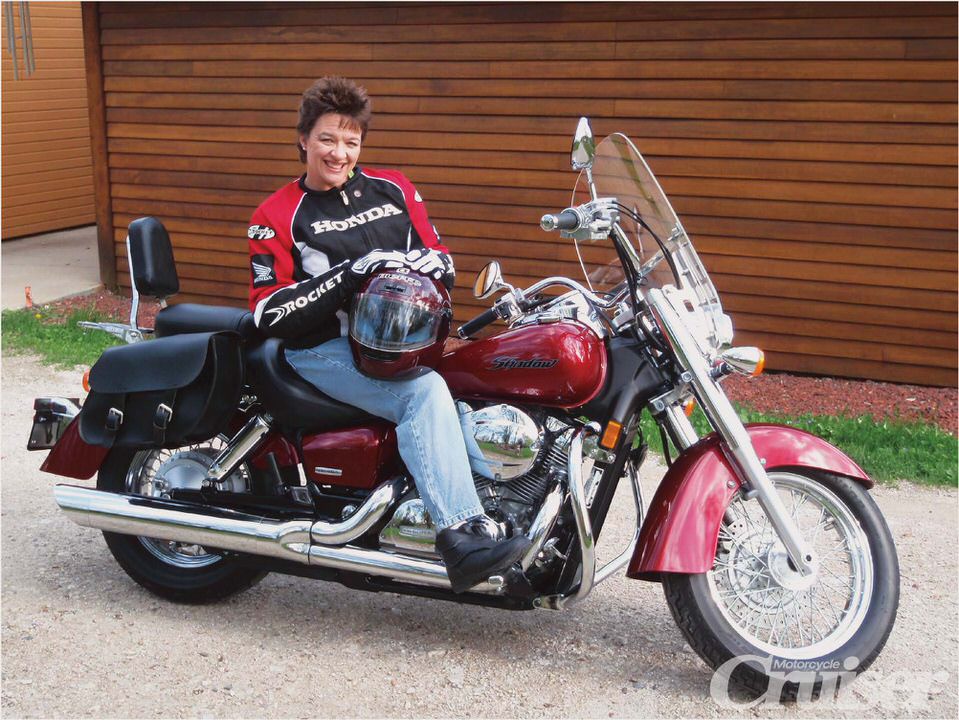
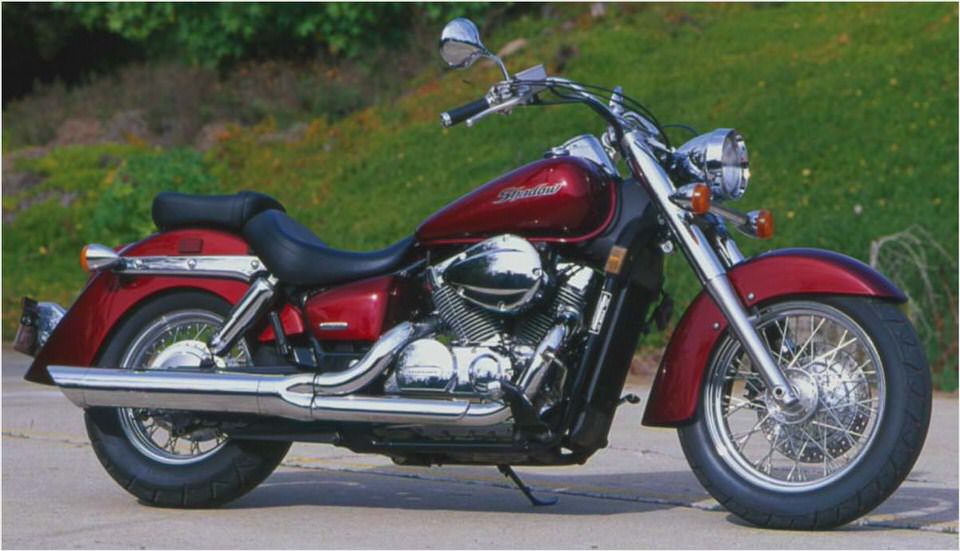
2004 Honda Shadow Aero 750
2004 Honda Aero 750
While the displacement wars rage on in the heavy cruiser market, with the Big Four trying to outdo each other, and now Triumph is promoting piston envy, it’s good to remember that there is still a lot going on in the middleweight category, which now is really considered entry level. In fact, despite Honda ‘s recent 1300cc and 1800cc VTX launches in the V-Twin category, and their 1800cc, six cylinder GoldWing and Rune offerings, the largest sales segment for Honda street bikes has been in the 750cc lineup.
But since many of their models had been showing their age, Honda has bagged the 750 A.C.E. the 750 Spirit, and even the 750 Nighthawk, and placed all their eggs in the new Shadow Aero 750 ‘s basket. I think they made a good choice.
The biggest news with the Aero is that Honda dropped the chain drive from the old 750’s in favor of a quiet maintenance-free shaft drive. Now this 750 competes on a level playing field with the Suzuki Intruder and Volusia 800’s, the Kawasaki Vulcan 750, and the Yamaha V-Star 650, which now may feel the pressure to bump up their displacement to the 750 range soon.
Just before I swung a leg over the new Aero, Dan Burdett, of Des Plaines Honda, in Des Plaines, Illinois, joked, With this seat height, even your stubby legs should be able to reach the ground easily. He was right. I actually felt lanky as I settled into the comfortable saddle which sat only 25.9 inches above the pavement.
This will be good news to all short legged riders, and inspire confidence for newbie riders who may never have been on any other bike beside the Honda Rebel 250 they rode in the MSF class. In fact, it’s even a half inch lower than the Rebel’s seat!
Pull the choke, press the starter, and the engine fires up easily. It quickly settles into a pleasant and muted rhythm. The powerplant is a 52-degree, liquid-cooled V-Twin, single overhead cam with two spark plugs and three valves per cylinder.
It uses a single-pin crank so you get the familiar V-Twin beat, and a single 34mm constant-velocity Keihin carb to mix the fuel, and allow for easy adjustments. The sound from the large 2-into 1 exhaust is a bit throatier than previous models, and appropriate for the size of the engine and character of the bike.
The silky smooth clutch requires a light pull, for easy take-offs. Gear shifts are positive, and it’s easy locating neutral. The space between the forward mounted footpegs and the shift lever was a bit tight for large boots, however.
Acceleration is crisp, as you move up through the gear box, and there’s sufficient torque from idle to near the top of the rev range. Throttle response is immediate, so passing and lane changes are easily accomplished. But you have to remember that since this is only a 750cc engine, you’ll need to be in the proper gear to get the most out of the motors capability.
Once again Honda has created a gem of a motorcycle in the Aero. Despite only offering 745cc of displacement, the little water-cooled V-Twin has plenty of power to get you out of harms way.
As I was riding this Aero I reminded myself that my most recent test rides were on some of the largest cruisers, like the 1600 Mean Streak, the 1700 Road Star, and the 2000cc Vulcan. I laughed at the thought that I was riding a bike whose displacement was just three-quarters of the size of just ONE of the Vulcan’s cylinders. But that certainly didn’t spoil the riding experience of this Aero for me.
In fact, I think it made me appreciate this middleweight even more. I may be one of the few motorcycle journalists who really appreciates and enjoys the benefits of smaller bikes, and doesn’t look down on them as being minor league players in a world of major league superstars.
In fact, riding middleweights give you a more basic and elemental riding experience. With the big bikes, you shift into second at 15 or 20 miles per hour, and you can ride around in suburban traffic all day in second because there is enough torque and power to ride between 15 and 50 mph. On fast twisting roads, you can stay in 3rd gear, brake into a turn and power out of it without needing to shift.
Even passing on the highway is easily accomplished without downshifting out of 5th gear. But on a smaller middleweight, you need to be in the right gear to get the most out of the bike. You need to have a feel for the bikes powerband and to make your maneuvers in the right gear, at the right time.
You’re more engaged in the ride. You feel more in control and in tune with the bike, and the feedback feels more immediate. The big bikes can make you lazy and complacent.
The Aero weighs only 519 lbs dry, which makes it easy to maneuver at low speeds, and it feels light and quick in the turns. The comfortably placed handlebars provide excellent leverage to lean the bike into a curve, and it tracks well and feels stable all the way through. The non-adjustable 41mm front fork has 4.6 inches of travel and overall is well tuned for the bike, while the rear end sports dual five-position preload adjustable shocks with 3.5 inches of travel.
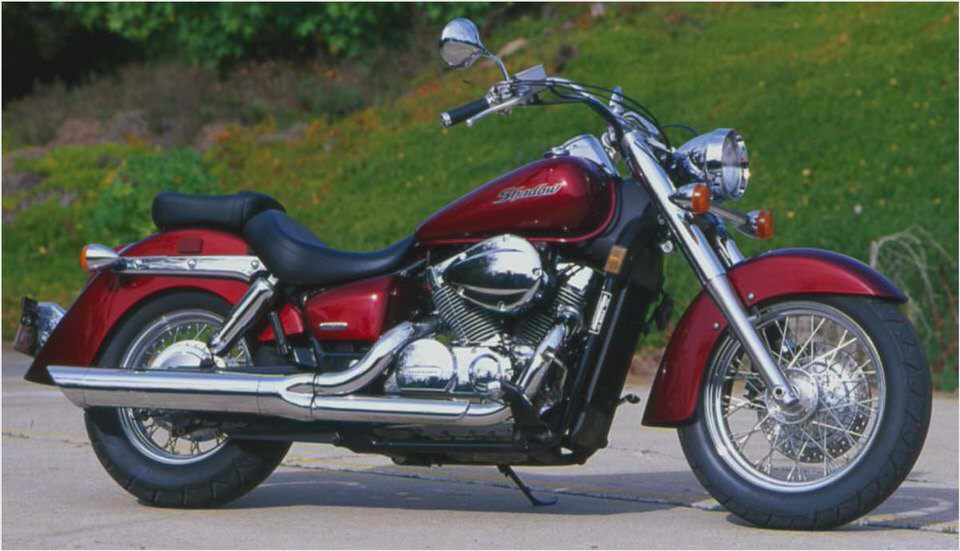
The limited rear travel becomes apparent over harsh bumps, sending more feedback into you spine than necessary, but overall the ride quality is good. The generous 64.5 inch wheelbase, and meaty rubber, helps the ride quality out on the open road, where the Aero is quite comfortable cruising at 75.
Braking chores are handled by a single 296mm disc up front with twin piston calipers, and a 180mm rear drum, a fairly common set-up for a bike in this price range. The brake lever is made for small hands, and requires a moderate pull. The brakes are adequate, but riders should learn to use both to achieve the best stopping power.
That’s another way that a midsize keeps you focused on your riding.
Ergonomically the Aero works well. The bars are very comfortably placed, the forwards footpegs don’t require a stretch, the seat is comfortable and the pillion pad is thick if not too wide. The mirrors are rock steady and provide a good view of the road behind you, and the tank top speedometer is easy to see and even has an LCD odometer and dual tripmeters.
The Shadow Aero is all-new for 2004. It fits finely in the void left by the A.C.E. and Spirit 750s as an excellent affordable entry-level cruiser.
Styling-wise, the Shadow Aero has that long, low, slammed look. The 98 inch tip to tail measurement is made to look even longer because of the sweptback trailing edges of the full fenders, a la the VTX Retro fenders. There is plenty of brightwork, though much of it plastic. The rear shocks have handsome chrome covers, as well as the upper front fork tubes. The wheels are chromed spokes, and add to the classic cruiser look.
The radiator is well hidden between the frame tubes, and the fit and finish is clean and first rate.
The new Aero 750 is an excellent and versatile motorcycle. It is perfect for new riders, or riders just coming back to the sport after a long absence because neither its size nor power is intimidating. But it’s also an excellent choice for anybody who wants a solid, low maintenance, capable, fun to ride motorcycle that’s as easy on the wallet as it is on the eyes.
The Aero starts at $6,199, and a two-tone paint job will sell for $6,499. And Honda already has a sizeable accessory catalogue with saddlebags, sissy bars, luggage racks, and enough chrome pieces to tart it up to your hearts content.
Share your thoughts on the ’04 Honda Shadow Aero in the MCUSA Forum. Click Here
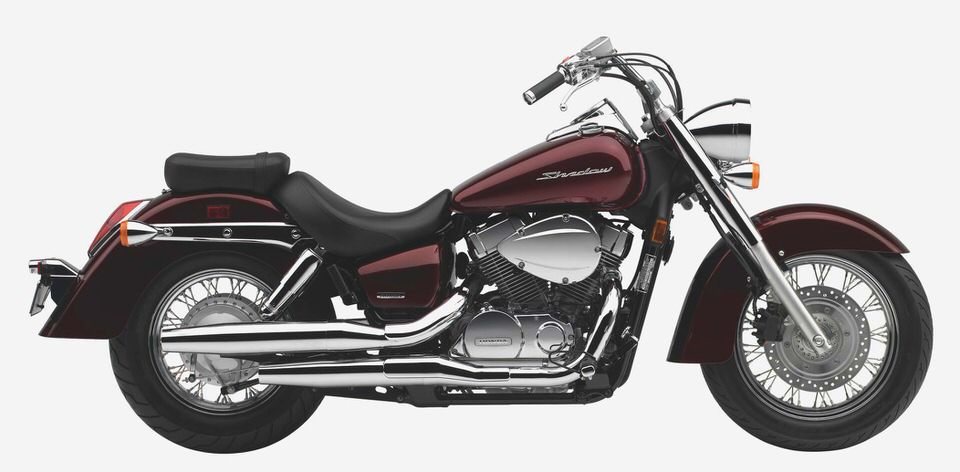
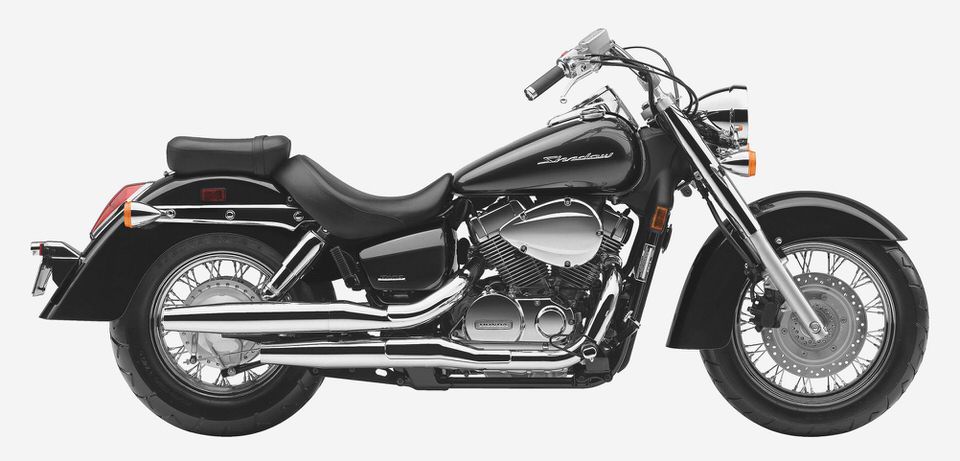
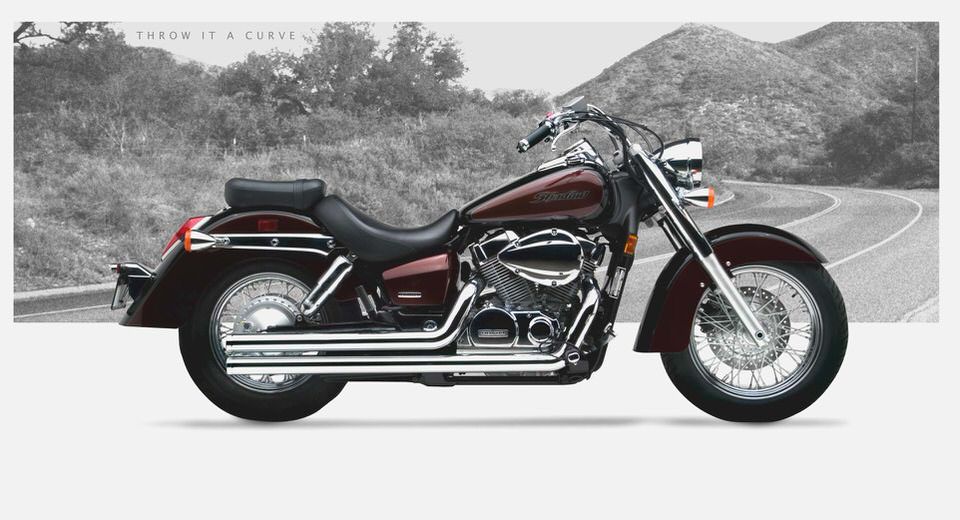
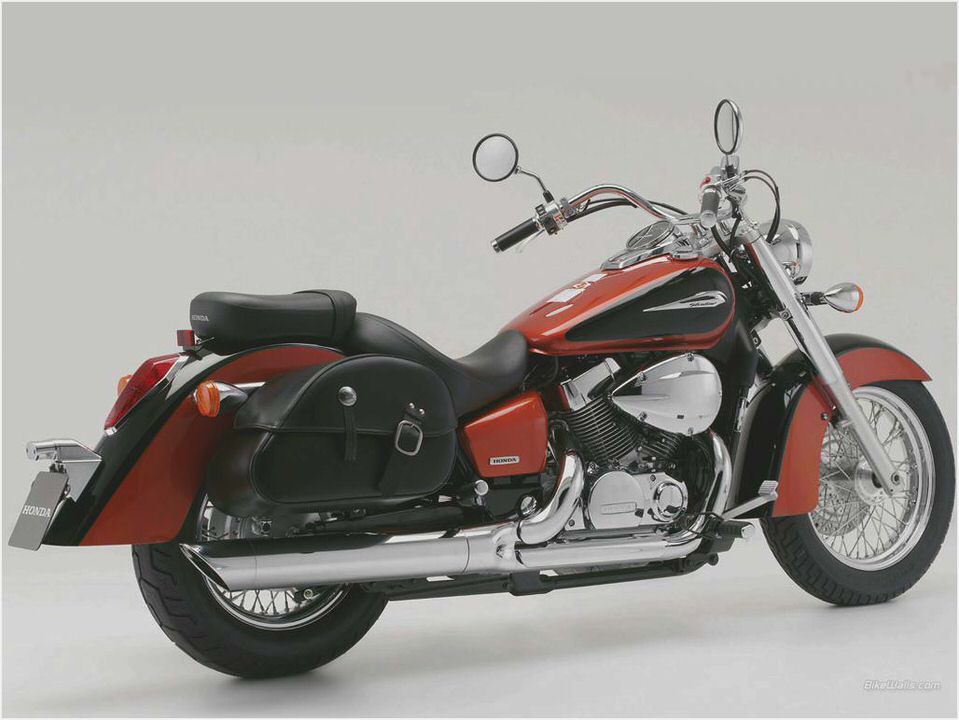
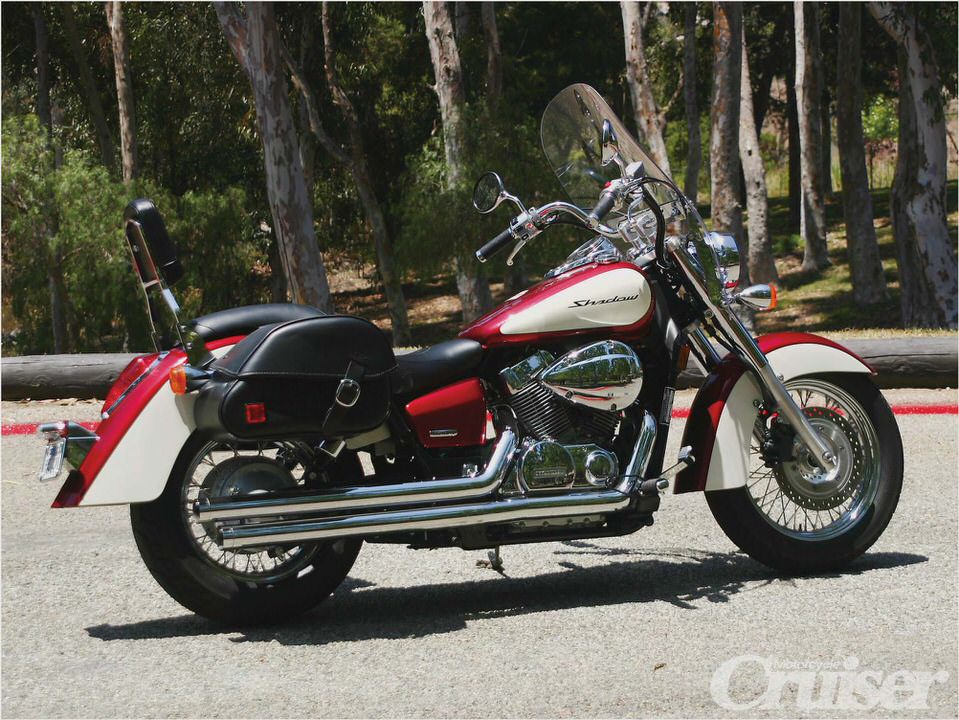
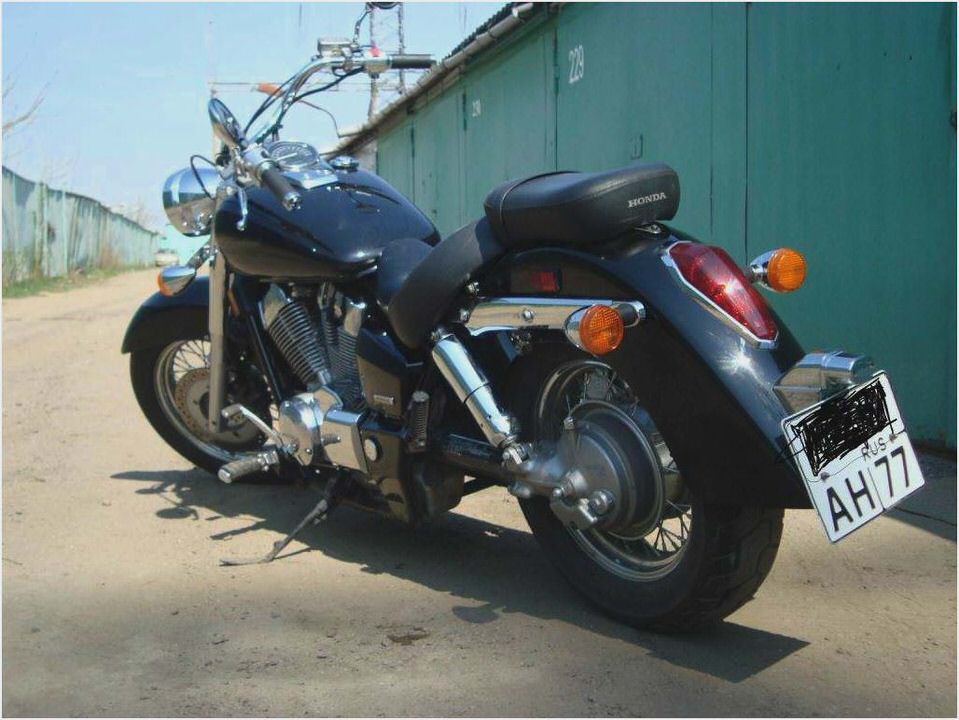
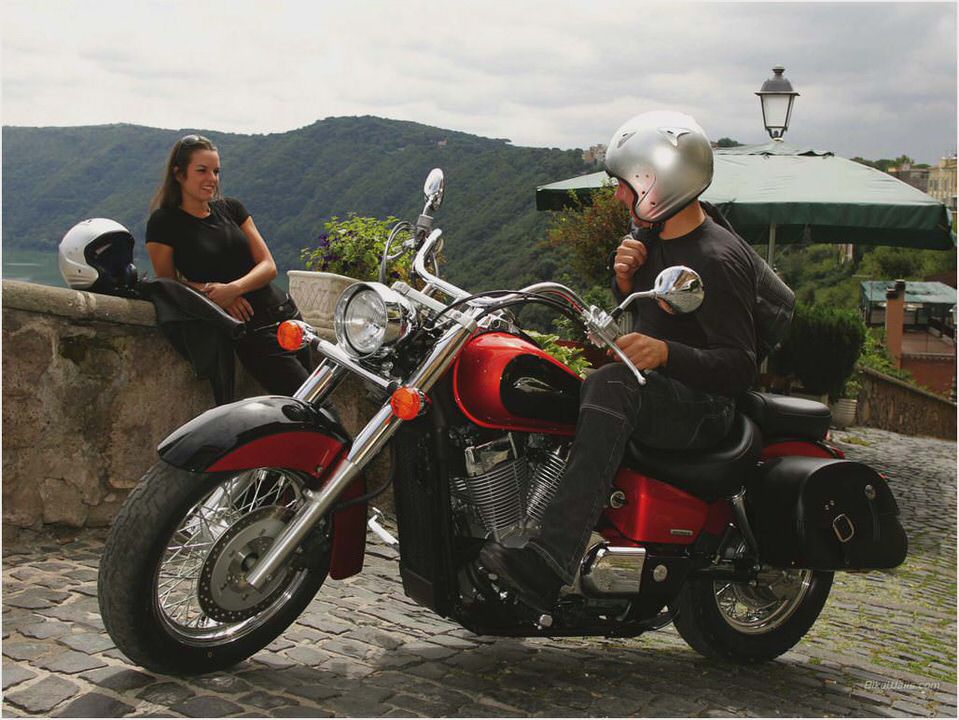
- Honda Today – Wikipedia
- Motorcycle Daily News 2013 Honda CB1100
- Honda Rebel 250cc Motorcycle Review – Yahoo Voices – voices.yahoo.com
- 2011 Honda Interstate VT1300CT Honda Motorcycles – Honda Motorcycle…
- 2004 Honda 599 – Motorcycle USA

